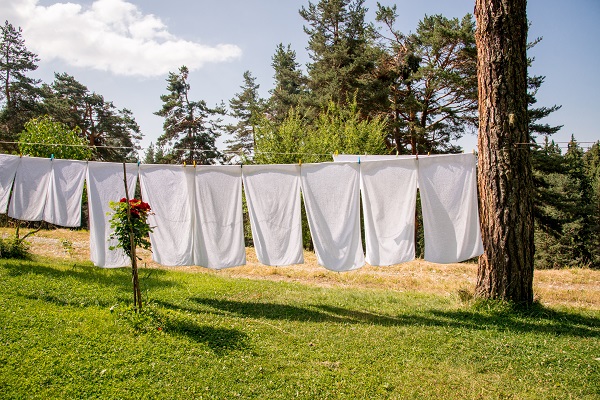
Does your dirty laundry need airing?
Every day, thousands of sheets, pillowcases, towels, bathmats and face cloths are changed and laundered in accommodation facilities across the country.
However, with the rising cost of utilities and labour, as well as the harsh chemicals used in the laundering process, it is becoming less cost effective to keep laundry services in-house. The supply and management of linen for any sort of accommodation business can be costly and time consuming.
As a result, accommodation providers are increasingly choosing to outsource this part of their business to commercial laundries. These businesses are set up to handle large volumes of linen from a variety of sources, and have the facilities to wash, dry and iron hundreds of kilograms of linen each day.
Some offer a linen rental service where the linen is owned, managed and replaced by the laundry, while others simply launder the accommodation facility’s own linen.
Whether it’s for large resorts, small boutique hotels or motels, outsourcing can deliver financial benefits and peace of mind to enable establishments more time to focus on their guests.
Inevitably, there are advantages and disadvantages to be considered when deciding to outsource. When outsourcing linen for the first time or with a new commercial laundry, an account manager or representative from the laundry will visit the establishment to discuss the needs of the business. This can include an analysis of current linen processes, budget, ideal pick-up and delivery schedule and so on, which could be a disadvantage for very busy managers. After that, laundry turnaround times vary from one to two days, bi-weekly or weekly depending on usage and storage ability and this is where those busy managers may find they are saving time. Particularly on the staffing front, as they can free up more hands to take care of other things.
Quality specifications are another factor to consider and most laundries will have a range to fit different standards. One benefit of outsourcing is that there is more of a guarantee that linen will be sufficiently disinfected, both both thermally and chemically to eliminate any concerns about bacteria surviving and potentially creating health issues. This standard is harder to achieve in-house where the provider may not be fully equipped to cope with the required turnaround.
In terms of cost, it is often determined on a per item basis but costs do vary and are very much related to demand and competition. King sheets, for example could vary in price from $1 to $1.50 depending on things like volume and frequency of turnover. Additionally, when hiring linen, the accommodation provider receives a consistent, quality product. Sheets and towels, for example, can be replaced by the laundry when required rather than it being a budget constraint, which can then drop off the priority list.
However, it’s not just the ability to replace soiled linen or advise customers when their own linen requires replacing that makes outsourcing laundry services an option worth further consideration. Aside from the touched-upon benefits to the business’ cash flow that comes from things like not having to manage laundry staff, budget for additional utility usage, or invest in and maintain expensive, bulky laundering equipment.
A major consideration for many accommodation providers, particularly in today’s world, is the size of their carbon footprint and whether their processes are as sustainable as possible. Laundry services on the whole, whether in-house or through an outsourced contractor, are not best known for being environmentally-friendly.
The laundering of linen is a harsh process that uses a number of resources, particularly gas, electricity and water, as well as harsh chemicals during the washing process. The payback, in terms of increasing sustainability, is much more attainable by an outsourced laundry contractor than by an accommodation provider because they have much more of a customer-driven incentive to reduce their carbon footprint.
Indeed, for many commercial laundries, efficiency at the operational level is often matched by environmental efficiency, with many leading commercial laundries focusing on reducing water and energy use.
It is a careful balance though because chemical and thermal disinfection still has to be achieved to ensure bacteria is destroyed. The chemicals that professional launderers use are supplied by commercial chemical suppliers that attempt to produce chemical products that help with minimising water use and temperature levels, which may be more difficult to judge in-house.

AccomNews is not affiliated with any government agency, body or political party. We are an independently owned, family-operated magazine.







